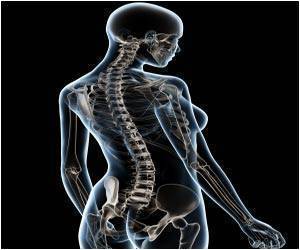A study by researchers from Utrecht University on the effect of negative emotions on pain perception in women with and without fibromyalgia found that anger and sadness amplified pain

Fibromyalgia (FM), a chronic pain condition, has among the largest impact of all rheumatic and chronic pain conditions. In addition to chronic, widespread pain, patients report accompanying symptoms such as fatigue, functional disability, and psychological distress. FM is thought to involve heightened pain sensitivity to a variety of psychophysical and emotional stimuli, with negative emotions believed to be experienced more strongly in FM patients than in the general population.
The Utrecht team theorized that specific negative emotions such as sadness and anger also would increase pain more in women with FM than in healthy women. Their study examined the effects of experimentally-induced anger and sadness on self-reported clinical and experimentally-induced pain in women with and without FM. Participants consisted of 62 women with FM and 59 women without FM. Both groups were asked to recall a neutral situation, followed by recalling both an anger-inducing and a sadness-inducing situation, in counterbalanced order. The effect of these emotions on pain responses (non-induced clinical pain and experimentally-induced sensory threshold, pain threshold, and pain tolerance) was analyzed with a repeated-measures analysis of variance.
Self-reported clinical pain always preceded the experimentally-induced pain assessments and consisted of reporting current pain levels ("now, at this moment") on a scale ranging from "no pain at all" to "intolerable pain." Clinical pain reports were analyzed in women with FM only. Electrical pain induction was used to assess experimentally-induced pain. Participants pressed a button when they felt the current (sensory threshold) and when it became painful (pain threshold) and intolerable (pain tolerance). Four pain assessments were conducted per condition, and very high internal consistencies were obtained.
More pain was indicated by both the clinical pain reports in women with FM and pain threshold and tolerance in both groups in response to anger and sadness induction. Sadness reactivity predicted clinical pain responses. Anger reactivity predicted both clinical and electrically-stimulated pain responses.
Both women with and women without FM manifested increased pain in response to the induction of both anger and sadness, and greater emotional reactivity was associated with a greater pain response. "We found no convincing evidence for a larger pain response to anger or sadness in either study group (women with, or without FM), said study leader Henriët van Middendorp, Ph.D. "In women with FM, sensitivity was roughly the same for anger and sadness."
Advertisement
In a related study, a research team from Radboud University Nijmegen Medical Centre found that tailored cognitive-behavioral therapy (CBT) and exercise training tailored to pain-avoidance or pain-persistence patterns at a relatively early stage after diagnosis is likely to promote beneficial treatment outcomes for high-risk patients with FM.
Advertisement
High-risk patients were selected and classified into 2 groups (84 patients were assigned to a pain-avoidance group and 74 patients to the pain-persistence group) and subsequently randomized to either the TC or WLC. Treatment consisted of 16 sessions of CBT and exercise training, tailored to the patient's specific cognitive behavioral pattern, delivered within 10 weeks. Physical and psychological functioning and impact of FM were assessed at baseline, post-treatment, and 6-month follow-up.
The treatment effects were significant, showing notable positive differences in physical (pain, fatigue, and functional disability) and psychological (negative mood and anxiety) functioning, and impact of FM for the TC in comparison with the WLC. Clinically relevant improvement was found among patients in the TC group.
"Our results demonstrate that offering high-risk FM patients a treatment tailored to their cognitive behavioral patterns at an early stage after the diagnosis is effective in improving both short-and long-term physical and psychological outcomes," says junior investigator Saskia van Koulil. "Supporting evidence of the effectiveness of our tailored treatment was found with regard to the follow-up assessments and the low dropout rates. The effects were overall maintained at 6 months, suggesting that patients continued to benefit from the treatment."
Source-Eurekalert













